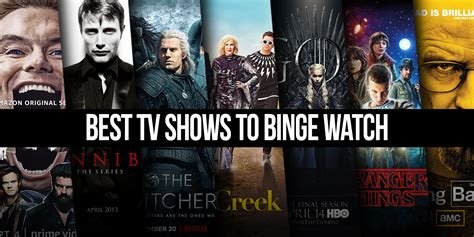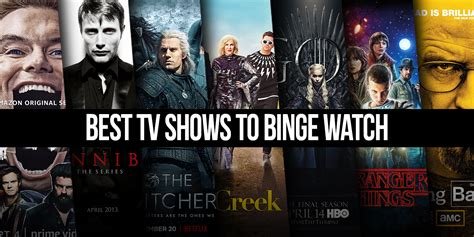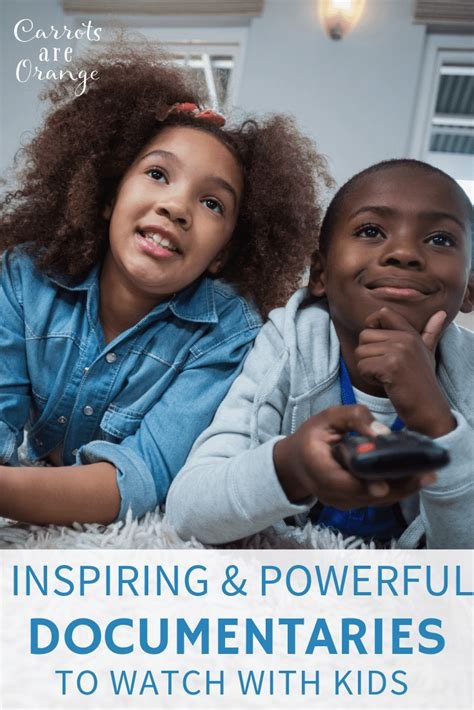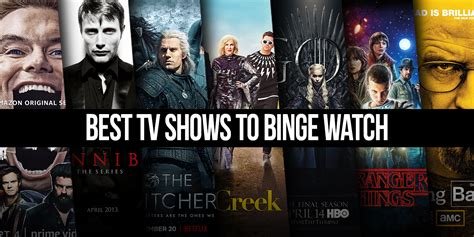In the blog post titled Top 10 Educational TV Shows That Entertain and Inspire, the author explores the significant impact of educational television on learning and personal development. The article lists the top 10 shows that effectively blend education with entertainment, spanning various genres, and highlights how they enhance learning for children and adults alike. It discusses key takeaways from popular series and addresses the challenges educational shows often face in engaging viewers. Additionally, the post provides tips for selecting the right educational content for kids and summarizes expert opinions on the value of educational television. Conclusively, the article emphasizes the importance of embracing educational TV as a tool for lifelong learning, encouraging parents and educators to recognize its potential benefits.
Introduction To The Impact Of Educational TV Shows
Educational TV shows play a significant role in shaping the way viewers, especially children, absorb information and learn about the world around them. These programs have the unique ability to blend entertainment with education, making complex subjects more accessible and enjoyable. As we explore the Top 10 educational TV shows, it is essential to understand their influence not only on knowledge retention but also on fostering curiosity and critical thinking skills.
One of the remarkable aspects of educational shows is their capacity to engage audiences through storytelling, captivating visuals, and interactive elements. This combination not only keeps viewers entertained but also encourages them to ask questions and seek further understanding of the topics presented. For parents and educators, the value of integrating these shows into learning routines cannot be overstated, as they serve as powerful tools in support of traditional education.
- Encourages critical thinking: Educational shows often present problems that require audiences to solve them, nurturing analytical skills.
- Enhances creativity: These programs introduce imaginative storytelling, inspiring viewers to explore their own creativity.
- Promotes lifelong learning: By instilling a sense of curiosity, these shows foster a love for learning beyond the classroom.
- Strengthens language skills: Viewers are exposed to new vocabulary and concepts, which can improve communication skills.
- Builds social skills: Many educational shows include themes of cooperation and empathy, aiding in social development.
- Provides a safe learning environment: These programs often address sensitive issues in a controlled setting, making learning more approachable.
- Equips with practical knowledge: Viewers gain valuable insights into science, history, and culture, enhancing their overall understanding of the world.
Ultimately, the impact of educational TV shows extends far beyond mere entertainment. They motivate viewers to explore new ideas and perspectives while also reinforcing important concepts in an engaging manner. The upcoming list of the Top 10 educational TV shows will highlight examples that exemplify the potential of this genre, showcasing programs that have received acclaim for their ability to inspire and educate effectively.
Top 10 Shows That Inspire And Educate
In the realm of educational television, some shows not only entertain but also instill valuable lessons and inspire viewers of all ages. These programs represent a blend of entertainment and knowledge, transforming the viewing experience into an engaging learning journey. By utilizing captivating formats and expert storytelling, these shows significantly contribute to the cognitive and emotional development of their audience, making learning enjoyable and effective.
Let’s delve into the Top 10 educational shows that consistently deliver insights and knowledge while keeping viewers hooked. Each of these shows brings unique content that fosters curiosity, encourages creativity, and opens up discussions on various topics, thus enhancing understanding and awareness of the world. Here, we will detail the ranking and significance of each show within this prestigious list.
Ranking Details Of Each Show
- 1. *Cosmos: A Spacetime Odyssey* – Explores the universe’s mysteries through stunning visuals and engaging narrative.
- 2. *Sesame Street* – Fosters foundational learning through interactive puppetry and diverse characters.
- 3. *Bill Nye the Science Guy* – Makes science accessible with humor and practical demonstrations.
- 4. *The Magic School Bus* – Takes adventures in science and nature, igniting imagination and inquiry.
- 5. *Planet Earth II* – Showcases nature’s wonders with breathtaking cinematography, highlighting environmental issues.
- 6. *Dora the Explorer* – Encourages problem-solving and bilingual learning in a fun, interactive format.
- 7. *How It’s Made* – Provides insights into the manufacturing processes of everyday products, promoting curiosity about the world around us.
These top-tier educational programs are essential viewing for anyone seeking knowledge while enjoying captivating entertainment. Each show tailors its content to different demographics, making educational themes accessible across age groups. By blending storytelling with factual content, these shows elevate the educational experience, demonstrating that learning can indeed be fun.
As we explore the intricacies of educational television, it becomes clear that these Top 10 shows reflect the power of media in shaping understanding and compassion among viewers. Their impact extends beyond mere entertainment; they enlighten audiences and provide a foundation for critical thinking, creativity, and empathy in an ever-evolving world.
Understanding The Genres Of Educational TV
The landscape of educational television is rich and varied, providing viewers with a plethora of options that cater to different learning styles and interests. By categorizing these shows into specific genres, audiences can easily identify which types are most appealing and beneficial for their learning experiences. This section delves into the various genres of educational TV, highlighting their unique attributes and the value they bring to both children and adults. Understanding these genres is key to selecting the appropriate shows that align with educational goals.
Top 10
Additionally, educational TV shows come with their own set of advantages tied to their specific genres. Each genre contributes to learning in unique ways, helping to foster curiosity, knowledge retention, and critical thinking skills among viewers. The following list outlines how different genres of educational TV can be beneficial:
- Different Genres And Their Benefits
- Documentaries provide in-depth information on real-world topics.
- Animated shows engage younger audiences using colorful visuals and storytelling.
- Game shows create an interactive platform that enhances memory and quick-thinking skills.
- Tutorials offer step-by-step guidance on various subjects and skills.
- Nature shows promote awareness and understanding of the environment and wildlife.
- Cultural programs encourage appreciation of diverse cultures and histories.
- Science series stimulate interest in scientific concepts and explorations.
Each genre enriches the viewer’s knowledge, and further examination reveals compelling insights into who benefits most from them, especially among younger audiences. Parents and educators often use these classifications to select targeted content that aligns with the educational needs and interests of children.
Documentaries
Documentaries serve as a profound means of educating viewers by exploring real-life events, issues, and stories. They are known for their factual accuracy and in-depth research, making them an essential resource for learners of all ages. These shows not only captivate audiences with gripping narratives but also provide an opportunity to understand the complexities of the world, paving the way for informed discussions and critical thinking.
Animated Shows
Animated educational shows leverage creativity and imagination to capture the attention of young viewers. By combining entertainment with instruction, these programs use visually appealing graphics and relatable characters, making learning fun and accessible. Animated shows can simplify complex topics and make them more relatable, ensuring that children grasp essential concepts while enjoying the storytelling process.
Game Shows
Game shows have emerged as a dynamic genre that merges education with entertainment. By incorporating trivia questions and challenges, they create an engaging way for participants and viewers to learn while competing. This interactive component fosters a sense of excitement, encouraging continual learning and collaboration among players. The competitive nature of game shows motivates viewers to expand their knowledge, making them ideal for both family viewing and educational settings.
How Educational TV Shows Enhance Learning
When it comes to enriching a child’s learning experience, educational TV shows play a pivotal role. These programs not only entertain but also inspire young minds to explore various subjects while developing critical thinking skills. The integration of animated characters and storylines makes lessons engaging, ensuring that children remain captivated. Top 10 educational shows have demonstrated that learning is not confined to the classroom; instead, it can occur organically through captivating visual narratives.
Furthermore, educational TV shows can enhance vocabulary and language skills. By exposing children to new words and phrases through dialogues and themes, these shows often help children improve their language comprehension. Parents can turn watching these programs into interactive experiences, discussing characters and situations, which further solidifies learning. Incorporating dialogues from these shows into daily conversations can also encourage children to practice and expand their language skills.
Steps To Use Educational TV Effectively:
- Choose age-appropriate shows that align with your child’s learning stage.
- Schedule specific viewing times to maintain a consistent routine.
- Engage in discussions about the show’s content afterward.
- Encourage children to ask questions about the characters and plots.
- Integrate lessons from the shows into real-life activities.
- Utilize related books to amplify the learning experience.
- Limit screen time to balance educational TV with other activities.
Educational TV shows also promote emotional and social development, as many programs address themes of friendship, teamwork, and empathy. Through relatable characters and stories, children learn about different cultures, values, and social situations, enhancing their understanding of the world. In conclusion, embracing Top 10 educational TV shows not only broadens knowledge but also nurtures essential life skills, preparing children for a successful future.
Key Takeaways From Popular Shows
Discovering the Top 10 educational television shows reveals a wealth of knowledge and inspiration that can engage audiences of all ages. These programs not only entertain but also cultivate curiosity and instill valuable lessons in viewers. By examining key takeaways, we can appreciate the significant impact these shows have on our understanding of various subjects. From science to history, these educational gems successfully bridge the gap between learning and entertainment.
One of the most important aspects of these shows is their ability to present complex information in an accessible manner. Whether through captivating storytelling or interactive elements, they encourage viewers to explore and engage with topics that might otherwise seem daunting. This approach not only enhances retention but also sparks a lifelong love for learning, making education an enjoyable experience for all.
- Important Lessons Learned
- Critical thinking skills are developed through problem-solving scenarios.
- Understanding cultural diversity helps foster empathy and acceptance.
- Real-world applications enhance the relevance of academic subjects.
- Encouragement of creativity and innovation in approaching challenges.
- Environmental awareness and responsibility are instilled through engaging storylines.
- Historical context enriches present-day understanding.
Moreover, these shows often emphasize the importance of collaboration and teamwork. As characters work together to overcome obstacles or solve problems, viewers learn the value of collective efforts and the significance of diverse perspectives. By modeling positive social interactions, educational programming can influence behaviors and inspire unity among audiences.
In summary, the Top 10 educational TV shows serve as a valuable resource for both nostalgic viewers and newcomers alike. Their ability to entertain while imparting crucial lessons makes them an essential part of modern learning. By integrating these shows into our lives, we can continue to expand our knowledge and inspire future generations to pursue their educational journeys enthusiastically.
Top Challenges Faced By Educational Shows
While Top 10 educational TV shows play an essential role in facilitating learning and sparking curiosity in viewers, they also encounter several significant challenges in their production and delivery. Producing content that balances education and entertainment requires creativity and a deep understanding of educational techniques and audience preferences. Maintaining this delicate balance can be tricky, especially in a world where entertainment options are vast and often more appealing to audiences.
One of the primary obstacles is capturing and retaining the attention of younger viewers, who are often bombarded with distractions from various media platforms. With the prevalence of fast-paced content, educational shows must find innovative ways to engage their audience without compromising the quality or integrity of the information being presented. This endeavor necessitates skilled writers, educators, and entertainers collaborating to create programs that resonate with children while educating them effectively.
Common Drawbacks Of Educational TV Shows
- Overly Simplified Content
- Difficulty in Measurement of Impact
- Limited Engagement with Diverse Learning Styles
- Challenges in Finding the Right Balance of Fun and Education
- Potential Lack of Flexibility in Curriculum Alignment
- Overemphasis on Entertainment at the Expense of Learning
Another challenge lies in the production constraints that many educational shows face in terms of budget and resources. High-quality content that can captivate an audience often comes with elevated production costs. The challenge is to create visually appealing, high-production value episodes while staying within budget. Limited resources can affect the quality of animations, props, and overall presentation, which can detract from the educational experience that producers aim to deliver.
Additionally, educational shows often struggle with evolving educational standards and curricula, which may change over time. Producers must ensure that their content remains relevant and up-to-date, aligning with the necessary guidelines to retain credibility among educators and parents. This continuous need for adaptation can lead to time constraints and increased pressure on production teams, further complicating the process of creating effective educational programming.
Selecting The Right Educational Show For Kids
When it comes to selecting educational shows for kids, the choices can be overwhelming. Not all programs are created equal, and parents should take their time to evaluate what is appropriate and beneficial for their children. A great educational show should not only entertain but also inspire young minds to learn and grow. It’s essential to consider various factors that make up an ideal educational viewing experience.
Top 10 educational shows possess certain qualities that set them apart from other children’s programming. These qualities contribute significantly to the overall effectiveness of the show in fostering curiosity and critical thinking skills in young viewers. Finding a balance between entertainment and education is key, as children are more likely to engage with content that is presented in a fun and approachable manner.
Criteria For Choosing Shows
- Age Appropriateness: Ensure the content is suitable for your child’s age and comprehension level.
- Educational Value: Look for shows that teach important concepts in subjects like math, science, and language arts.
- Engagement Level: Choose programs that are captivating and maintain your child’s interest.
- Positive Messaging: Select shows that promote kindness, inclusivity, and good values.
- Interactive Elements: Consider programs that encourage viewer interaction, such as asking questions or inviting participation.
- Creative Animation: High-quality visuals can enhance learning experiences and keep children captivated.
- Diversity of Topics: Programs that cover various subjects can broaden your child’s knowledge base and keep learning interesting.
By understanding these criteria, parents can make informed decisions when it comes to their children’s viewing habits. Viewing these selections together not only fosters bonding but also provides an opportunity for parents to discuss important themes and lessons with their kids. This interactive experience can enhance comprehension and retention of information.
The right educational show can promote a love for learning that lasts a lifetime.
Selecting the right educational show for kids is a vital aspect of supporting their growth and development. With a well-thought-out approach, parents can ensure their children are not only entertained but also inspired to explore the world around them. By evaluating shows based on the criteria above, families can cultivate a healthy viewing environment that emphasizes lifelong learning.
Expert Opinions On Educational Television
When discussing the impact of educational television, it is essential to consider the insights of various experts in the field. Educational and entertaining programs play a vital role in shaping young minds, and specialists from diverse backgrounds have examined their effects. These professionals often highlight how impactful content can enhance learning, encourage curiosity, and foster creativity. The following expert opinions emphasize the value of integrating Top 10 shows into children’s viewing habits.
Insights From Educators And Psychologists
- Educational shows facilitate cognitive development by engaging children in critical thinking.
- Interactive segments enhance retention and motivation during learning processes.
- Programs that utilize storytelling foster imagination and enhance language skills.
- The visual and auditory elements of television can cater to different learning styles.
- Regular exposure to educational content can cultivate a lifelong love for learning.
Moreover, educators emphasize the importance of selecting age-appropriate content that aligns with children’s developmental stages. This meticulous approach not only improves their educational outcomes but also nurtures a healthy viewing habit. Understanding how to balance entertainment with educational value becomes crucial in today’s media landscape. By choosing quality programs, parents can ensure that their children derive maximum benefits from their television experiences.
The collaborative insights from both educators and psychologists reveal a consensus: educational television matters significantly in modern upbringing. As parents and guardians select programs, they should keep in mind the wealth of research supporting the role of such content in fostering knowledge. In addition, staying informed about the Top 10 educational television shows allows families to make wise choices that benefit their children’s development while keeping them entertained.
Conclusion: Embrace Educational TV For Lifelong Learning
In today’s fast-paced world, the value of continuous learning cannot be overstated. Top 10 educational TV shows have proven to be powerful tools that bridge the gap between entertainment and education. They not only capture our attention but also spark curiosity and inspire us to explore new ideas. By making learning fun and interactive, these shows encourage viewers of all ages to acquire knowledge in an enjoyable manner.
Furthermore, the influence of educational TV extends beyond just the immediate viewing experience. Such programs instill essential critical thinking skills and expose viewers to diverse cultures, histories, and innovations. By embedding educational content within engaging narratives, these shows foster a love for learning that can lead to lifelong intellectual pursuits.
To maximize the benefits of educational television, it’s essential for viewers to actively engage with the content. Transitioning from passive consumption to participatory learning can enhance retention and understanding. Here are some Actionable Steps For Viewers to help you get the most out of these shows:
- Take notes on fun facts and concepts introduced during episodes.
- Discuss the content with family or friends to reinforce learning.
- Participate in related activities or projects inspired by the shows.
- Research further on topics that pique your interest.
- Watch episodes multiple times to deepen understanding and retention.
Lastly, embracing educational TV as a resource for lifelong learning opens doors to endless possibilities. It’s crucial to remain curious and leverage these programs as stepping stones towards deeper knowledge. By doing so, you not only entertain yourself but also cultivate a more informed and educated mindset that can enrich both personal and professional life experiences.









